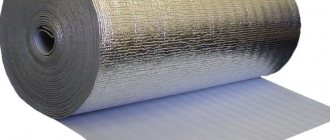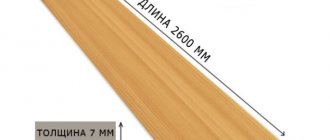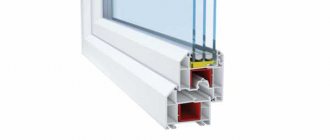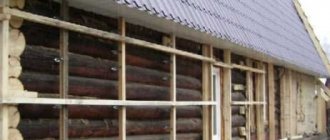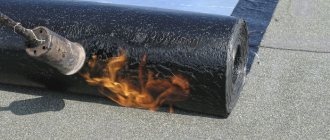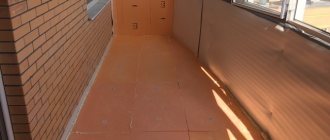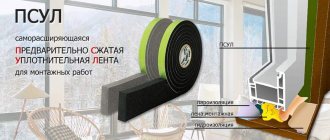Today, a large number of insulating building materials are known. Every day, the market for thermal insulation materials is expanding, and manufacturers are striving to improve their quality indicators.
Among the various types of insulation, it is worth highlighting reflective thermal insulation - foil penofol, produced in rolls. Let's find out what this material consists of and what characteristics it has.
Material structure
Foil penofol - refers to a type of reflective insulation. Such material was created solely for the purpose of protecting various structures from factors such as draft, cold, wind, moisture and vapor. It went through several stages of improvement, as a result of which it combined such qualities as: sound, heat, steam and waterproofing.
Consists of several main layers:
- The first layer is polyethylene, foam consistency with closed pores. The pores are filled 90% with air, so the material prevents heat transfer. The first layer can vary in material thickness, density and structure.
- The second layer is aluminum foil , which reflects heat. Foil - penofol can be covered on one or both sides, which is reflected in the technical characteristics of the product, as well as its features. It is worth noting that the connection of foil with polyethylene is carried out by heat welding.
Available in thicknesses from 2 to 40 mm. The thickness of the foil varies: from 12 to 30 microns. The operating principle of foil penofol is based on the functioning of a thermos. Thanks to the air cushion, which is covered with a reflective element in the form of aluminum foil, it is possible to retain heat for a long time. The use of such heat-insulating material in the construction of a house makes it possible not only to significantly save on heating, but also to slow down the process of warming up the house in the summer.
Dimensions
Penofol is available in rolls of various lengths, the maximum length of which is 30 m. The width of the canvas varies from 0.6 to 1.2 meters. The thickness of the material depends on the type of penofol.
Standardized material thickness: 2,3,4,5,8,10 mm. In rare cases, materials with a thickness of 40 mm are produced.
The foil material, which is 1 cm thick, has a high level of noise protection and retains heat much better. Insulation with a thickness of 5 mm, which has high technical characteristics, is very popular.
Penofol is available in rolls. The standard length of rolled sheets depends on the thickness of the building material and can be 5, 10, 15, 30, 50 m.
Advantages and disadvantages
Penofol, like any other building material, has its advantages and disadvantages. Thanks to these important factors, it is possible to choose the best option for insulating the house.
Benefits include:
- Possibility of using the material in various types of construction and repair work. The material can be considered universal;
- Low coefficient of vapor permeability, which makes it possible to exclude the additional use of vapor barrier materials;
- High level of sound insulation. Penofol perfectly protects houses and other construction buildings from noise;
- Ease of installation work. It is easy to cut and attaches to any type of surface;
- Subtlety. Penofol thickness: 4 mm allows you to replace polystyrene foam thickness: 3 cm;
- Environmentally friendly. The material is an absolutely safe and environmentally friendly product. The materials from which penofol is produced are used for food storage;
- Fire safety. The material does not support combustion, since it is based on foil;
- This type of insulation is not susceptible to negative effects from various rodents, as is typical for polystyrene foam;
- The material is easy and convenient to transport.
Thermal insulation qualities of Penofol
It should be noted that when compressed to 2–3 times the original thickness, air is partially displaced from the material, and the thermal conductivity coefficient increases significantly. At the same time, reducing the thickness of the layer leads to a proportional decrease in heat transfer resistance. This means, at least, that Penofol, as insulation, should not be used in a compressed state.
On the manufacturer's website you can find the following values:
- heat transfer resistance R of PENOFOL® insulation in a structure with a closed air gap is 1.175 – 1.362 m2C/W.
Apparently, such a high value for a thin layer of insulation was obtained by adding up the heat transfer resistance of directly foamed polyethylene with a thickness of 5 - 10 mm - only 0.15 - 0.3 m2C / W, and also by adding here the heat saving from foil (a barrier for radiant heat), which completely depends on the radiation power from the inside, the temperature in the room, the presence of heating sources, the degree of absorption of radiation by structures, and also, apparently, adding the resistance of the “closed air gap” of the structure, which can actually reach 1.0 m2C/W, for example, in a double-glazed window.
However, the obvious fact is that Penofol really does insulate, all that remains is to apply it correctly.
Main technical characteristics
Having learned about the advantages and disadvantages, it is worth finding out what basic technical parameters this material has:
- It is used at the following temperature limits: from -60 to +100 degrees;
- Thermal reflection coefficient reaches: 97%;
- The value of the thermal conductivity coefficient ranges from 0.037 to 0.052 W/m*C;
- Vapor permeability parameters do not exceed: 0.001 mg/m*h*Pa;
- Specific heat capacity - 1.95 J/kg*C;
- Sound wave absorption: no less than 32 dB;
- The specific gravity of 4 mm penofol is 44-74 kg/m3.
The principle of operation of foil insulation called “penofol”
Having decided on the question of what foam rubber with foil is called, it is necessary to understand the principle of operation of foil penofol. It is based on the functioning mechanism of a simple thermos. This development is associated with the name of the Scottish scientist in the field of chemistry and physics James Dewar, who conducted a series of experiments at the beginning of the twentieth century.
Penofol first accumulates thermal energy and then slowly releases it
Scientists have found that any substance can resist the transfer of heat. It accumulates heat waves, while accumulating energy. After some time, oversaturation is observed, leading to the fact that the material begins to give off heat.
The scientist then identified a number of materials that could reflect thermal energy rather than store it. These substances include polished aluminum. When thermal waves reach the surface, they are reflected from it by 99%, which indicates excellent thermal conductivity. Such substances must be supplemented with other materials that perform the function of “thermal barriers,” which can be foamed polyethylene.
From the above, it becomes clear what penofol is and how it works. Due to the fact that the air cushion in the form of foamed polyethylene is covered with a reflective element (foil), the material is able to retain the heat it receives from it for a long time. This is because polished aluminum does not store heat, but rather transfers it to another material that can store it. Thanks to its unique features, foamed penofol copes with this task in the best way.
Kinds
Depending on the intended use of the material, manufacturers produce the following types:
- type A , covered with foil on one side only. It is also called one-sided;
- type B , presented in the form of a double-sided foil coating. Used for autonomous type of insulation;
- type C, self-adhesive penofol, which at its base consists of foil, polyethylene and a layer of moisture-resistant glue. This option is convenient for installation and does not require additional installation tools.
In addition to the three main types, manufacturers also produce the following options:
- type ALP , which is additionally covered with polyethylene film. This film is designed to protect the material from aggressive environments;
- type M and R , presented in the form of one-sided insulation with a relief base;
- type AIR , special materials used to install air vents.
Reviews
There are many reviews from owners about penofol insulation in their homes. Olga said that they live in a multi-storey building and with the onset of cold weather, the need for insulation arose. Friends recommended foil insulation. He says that its cost is very affordable when compared with other materials. They laid it under linoleum and trimmed all the cracks in the windows with it. They were pleased with the result - their apartment became much warmer and more comfortable.
Then Igor told me that he had purchased a small summer cottage. He began to build a wooden house, a cottage and a garage on it. I wanted to insulate all these buildings at once. To insulate the bathhouse, he took foil-lined penofol.
I asked the sellers for a quality certificate to avoid fakes. Using this material, he insulated the roof, walls, and floor of the bathhouse. He shares that after one fire, the high temperature lasts for about two days. He is pleased and recommends this material to everyone.
Application
As a heat insulator:
- for houses;
- saunas and baths;
- hangars;
- warehouses;
- refrigeration chambers;
- shops and pavilions;
- air conditioning systems.
As an additional element of the structure:
- for internal and external walls;
- floors and ceilings;
- steam, hydro and heat insulators for roofs and attic floors;
- as a shielding heat reflector for heating radiators;
- insulator for doors and windows.
Installation rules
Depending on the scope of penofol application, the methods of its installation differ. To carry out installation work on laying material on the balcony, you should be guided by the following technology:
- To begin with, you should remember that there should be a distance of 1-2 cm between the structural elements and the penofol. Such a margin is required in order to eliminate the possibility of moisture and ventilation;
- Penofol should be laid with the foil side directly to the heat source;
- The material must be connected using special foil tape;
- Penofol sheets should be connected to each other end-to-end, which allows you to achieve maximum thermal reflection.
Advantages
Penofol insulation has many advantages:
- Versatility;
- Practicality;
- Efficiency despite the small thickness;
- A wide range of;
- Strength;
- Wide temperature range;
- Easy installation.
When penofol is used, the usable area in the room is reduced to a small extent. Thanks to the large selection, consumers have the opportunity to choose and find an option that suits their individual needs.
Penofol is ideal for use in extreme conditions: it is not afraid of frost down to -55 degrees and can withstand boiling temperatures of +100 degrees.
The rolled material is light enough, so the technician will not need outside help during installation work. Foam foam contains no harmful compounds, so it can be safely used for finishing living rooms.
We insulate the walls of the house with penofol from the inside
To insulate walls from the inside, it is recommended to use penofol up to 5 mm thick. You should use a material with a one-sided foil element. If 5 mm of insulation is not enough, then it is better to additionally insulate the walls with polystyrene.
The installation principle consists of the following steps:
- First you need to measure the required size of insulation and cut it;
- Using a stapler, you need to attach the material to the wall. For a concrete wall, you can use glue or staples;
- The material should cover the entire surface of the wall;
- The joints of the sheets should be taped with adhesive tape;
- A frame made of slats or plywood is installed on top of the foam foam;
- Then, plasterboard or chipboard is installed.
After the entire room has been covered with plasterboard, you can additionally insulate the house from the outside using polystyrene foam.
Using penofol, you can insulate the walls of the house from the outside, but after installation, you will need to protect it by covering the walls with plastic or corrugated sheeting.
Using this material as insulation for your home, you can significantly reduce your heating costs, since the material copes well with its main purpose - saving heat.
How to insulate a balcony
In order to avoid heat losses and the appearance of cold bridges on the balcony after insulation, you should ask to design an insulation plan. Work must be carried out in accordance with the instructions from the plan.
To prevent condensation, you can follow the following steps to insulate with penofol from the inside:
- Method No. 1 - the insulation layer should be attached both to the external wall and to the adjacent walls inside. Walls with ceilings located inside must be insulated at a width of at least 0.3-0.6 m from the external wall. In this option, the formation of condensation and cold bridges becomes impossible. It is worth considering that t- of internal walls and ceilings will be lower. As a result, condensation can occur on the plane of the walls in adjacent corners of adjacent rooms if insulation is not installed on the walls there.
- Method No2 - the surface of the walls located inside is also insulated, but with a thin, insulating ball. For example, to remove condensation on structures leaning against an insulated wall, it is worth painting the walls and ceilings at the junction points with thermal insulation paint. Creating a thin thermal insulation layer on the wall, where condensation is possible, causes an increase in the temperature of the wall surface by 2-3 degrees. This is sometimes enough to prevent condensation from appearing again.
- Method No. 3 – not the entire external wall is covered with insulation. In the plots connecting floors and walls to the external wall, that is, at the corners and the contour of the insulated wall, strips without an insulating layer are left. Heat-conducting inserts are inserted into the resulting grooves; the temperature of the connecting structures changes little, which prevents condensation from appearing in such places.
- Method No. 4 - to remove condensation, it is often enough to lower the air humidity in the room. Suitable air humidity in the room is 40-60%. You can control humidity in the same way as air temperature. To do this, you can purchase a moisture determination device and install it in the room. Electronic devices are also sold to measure the two properties mentioned.
Reducing air humidity is achieved by improving air ventilation in the apartment.

